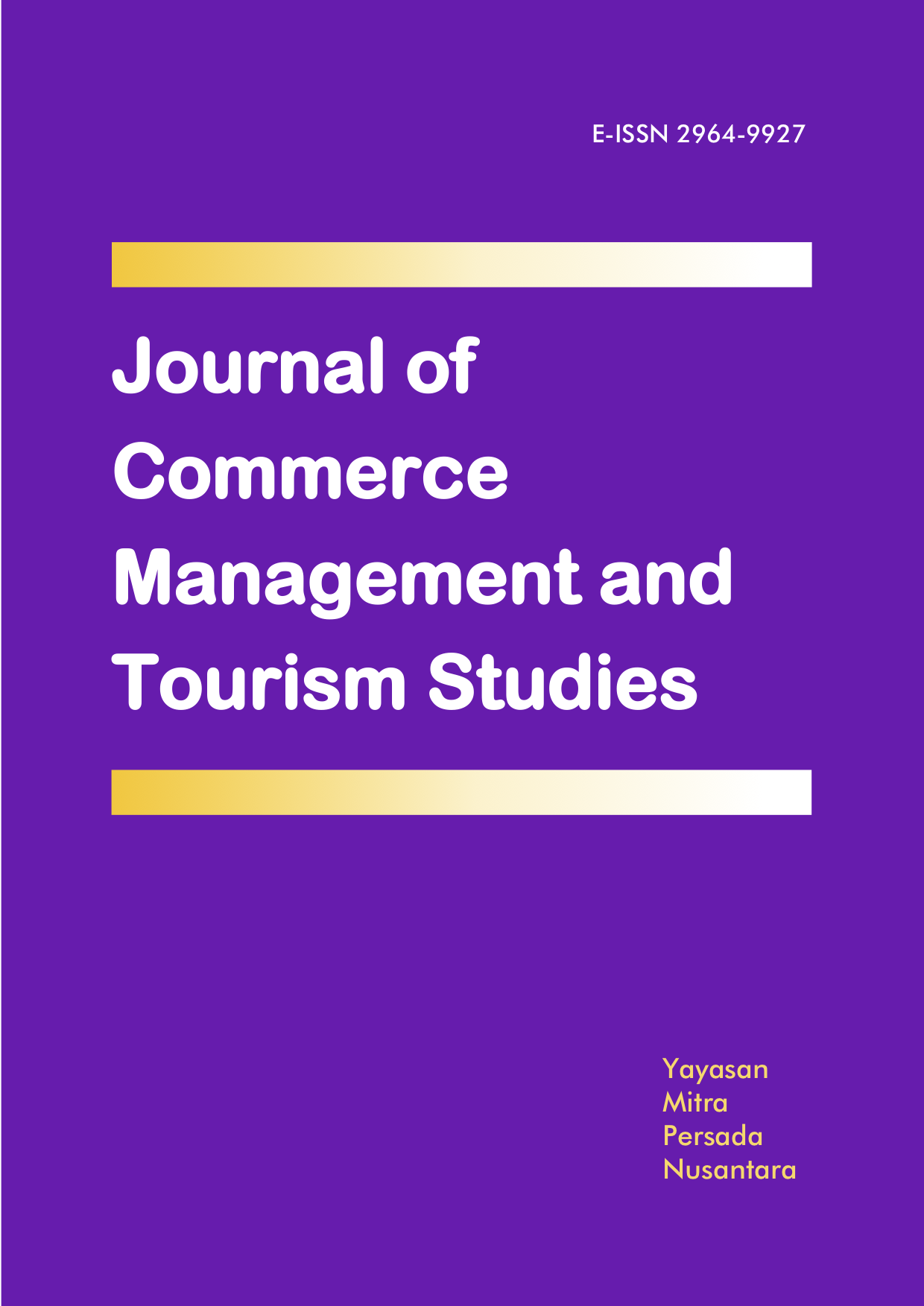Influence of digital finance service worth on customer satisfaction in Nepal
DOI:
https://doi.org/10.58881/jcmts.v2i3.106Keywords:
digital banking, customer satisfaction, servperf model, service quality, assuranceAbstract
Customer satisfaction is a major factor to sustain competitive advantage in the present dynamic and competitive environment for the organisations. The present research work is conducted to find how customers of Nepalese banks are happy with online banking system. Primary data is collected through the questionnaire developed from SERVPERF model on 5-point Likert scale. A sample sizes of 335 total respondents taken as for data collection. The research is descriptive, causal comparative in nature. Variables included in the study are tangibles, reliability, assurance, responsiveness, empathy as exogenous variables and customer satisfaction with e-banking service quality as endogenous variable. The data analysis were performed through the techniques:- descriptive statistics, correlation, multiple regression.Results of the study showed influenceof independent variables in all categories is positive and significant on dependent with R2 value of 0.627 which means 62.7% change in endogenous variable is due to exogenous variables and rest 37.3% is due to the other factors outside the model. Study shows that customers of Nepal are appropriatelycontended with the digital banking system in Nepalese banks. Assurance have been found as highest determining factor for customer satisfaction in e-banking services in Nepal followed by reliability and empathy.
Downloads
References
Aga, M., & Safakli, O. V. (2007). An empirical investigation of service quality and customer satisfaction in professional accounting firms: Evidence from North Cyprus. Problems and Perspectives in Management, 5(3), 84-98.
Al-Abed, S.A (2003). Electronic Banking, available at http://www.bankersonline.com/technology/gurus_tech081803d.htm
Asiyanbi, H., & Ishola, A. (2018). E-Banking services impact and customer satisfaction in selected bank branches in Ibadan metropolis, Oyo state, Nigeria. Accounting, 4(4), 153-160.
Asubonteng, P., McCleary, K. J., and Swan, J. E. (1996). Servqual revisited: a critical review of service quality. J. Serv. Market. 10, 62–81. doi: 10.1108/08876049610148602
Barquin, S., & HV, V. (2015). Digital Banking in Asia: What do consumers really want? McKinsey & Company.
Bedi, M. (2010). An integrated framework for service quality, customer satisfaction and behavioral responses in Indian banking industry—A comparison of public and private sector banks. Journal of Services Research, 10, 157-172
Berrocal, M. (2009). Fidelizacio´n y Venta Cruzada, Informe Caja Castilla La Mancha. Oliver, R. L. (1999). Whence Consumer Loyalty? Journal of Marketing, 63, 33-44. http://dx.doi.org/10.2307/1252099.
Burr, W. (1996). Wir informationstechnik die bankorganisation verandern konnte. Bank und Markt, 11, 28–31
Charity-Commission. (2003). Guidelines On Electronic Banking, available at http/www.charity-commission.gov.uk
Culiberg, B and Rojsek, I. (2010). Identifying service quality dimensions as antecedents to customer satisfaction in retail banking. Economic and Business Review, 12(3): 151-166.
Gronroos, C. (2000). Service Management and Marketing. A customer Relationship Management Approach.England: John Wiley & Sons, Ltd., 2. http://dx.doi.org/10.1108/02652320210446724
Ishfaq, M, Qadri, FA, Abusaleem, KSM, and Al-Zyood, M. (2015). Measuring quality of service from consumers' perspectives: A case of healthcare insurance in Saudi Arabia. Health Science Journal, 10(1): 1-11.
Ismail, I., Haron, H., Nasir Ibrahim, D., & Mohd Isa, S. (2006). Service quality, client satisfaction and loyalty towards audit firms: Perceptions of Malaysian public listed companies. Managerial auditing journal, 21(7), 738-756.
Jain, S. K., & Gupta, G. (2004). Measuring service quality: SERVQUAL vs. SERVPERF scales. Vikalpa, 29(2), 25-38.
Jayasundara, C., Ngulube, P., & Minishi-Majanja, M.K. (2009). A theoretical model to predict customer satisfaction in relation to service quality in selected university libraries in Sri Lanka. South African Journal of Libraries and Information Science, 75(2), 179-194.
Karjaluoto, H., Mattila, M., & Pento, T. (2002). Factors underlying attitude formation towards online Internetbanking in Finland. International Journal of Bank Marketing, 20(6), 261-272.
Kaura, V., Datta, S.K., & Vyas, V. (2012). Impact of Service Quality on Satisfaction and Loyalty: Case of Two Public Sector Banks. Vilakshan: The XIMB Journal of Management, 9(2), 65-76.
Khan, M. M., & Fasih, M. (2014). Impact of service quality on customer satisfaction and customer loyalty: Evidence from banking sector. Pakistan Journal of Commerce and Social Sciences, 8(2), 331.
Kheng, L.L; Mahamad O; Ramayah T, and Mosahab, R. (2010). The impact of service quality on customer loyalty: A study of banks in Penang, Malaysia. International Journal of Marketing Studies, 2(2): 57-69.
Kumbhar, V.M. (2011). Factors affecting the customer satisfaction in e-banking: Some evidences form Indian banks. Management Research and Practice, 3(4): 1-14.
Lustsik, O. (2004). Can E-Banking Services Be Profitable?, Tartu University Press, Estonia
Ladhari, R. (2009). A review of twenty years of SERVQUAL research. International Journal of Quality and Service Sciences, 1(2): 172-198.
Mohajerani, P; and Miremadi, A. (2012). Customer satisfaction modelling in hotel industry: A case study of Kish Island in Iran. International Journal of Marketing Studies, 4(3): 134-152.
Naidoo, V. (2011). Managerial Issues Associated with Service Quality-The Case of the University of Kwa-Zulu-Natal. In ICBER 2011 Conference.
Naidoo, V. (2014). Service quality perceptions of students at a South African University. Mediterranean Journal of Social Sciences, 5(27), 199.
Naik, C. K., Gantasala, S. B., & Prabhakar, G. V. (2010). Service quality (SERVQUAL) and its effect on customer satisfaction in retailing. European journal of social sciences, 16(2), 231-243.
Parasuraman, A; Zeithaml, VA; and Berry, L.L. (1985). A conceptual model of service quality and its implications for future research. Journal of Marketing, 49(4): 41-50.
Parasuraman, A; Zeithaml, VA; and Berry, L.L. (1988). SERVQUAL: A multiple-item scale for measuring consumer perc. Journal of Retailing, 64(1): 12-40.
Parasuraman, A., Zeithaml, V. A., & Berry, L. L. (1994). Reassessment of expectations as a comparison standard in measuring service quality: implications for further research. Journal of marketing, 58(1), 111-124.
Santos, J. (2003). E-service quality: a model of virtual service quality dimensions”, Managing service quality. 13(3), 233-246. http://dx.doi.org/10.1108/09604520310476490.
Wang, Yonggui & Lo, Hing-P & Hui, Yer. (2003). The antecedents of service quality and product quality and their influences on bank reputation: Evidence from the banking industry in China. Managing Service Quality. 13. 72-83. 10.1108/09604520310456726.
Downloads
Published
How to Cite
Issue
Section
License
Copyright (c) 2023 Binay Shrestha, Neha Agrawal

This work is licensed under a Creative Commons Attribution 4.0 International License.














